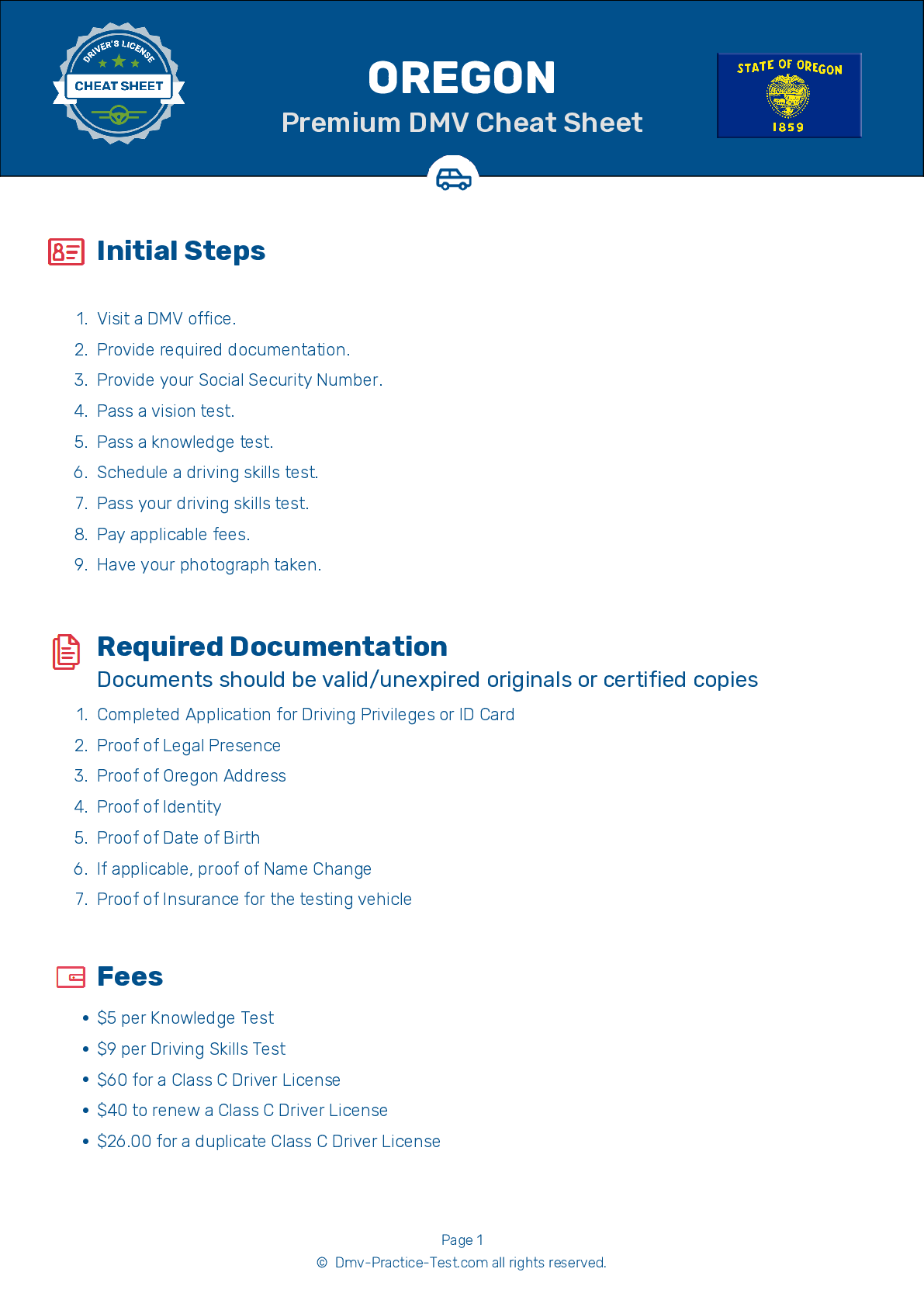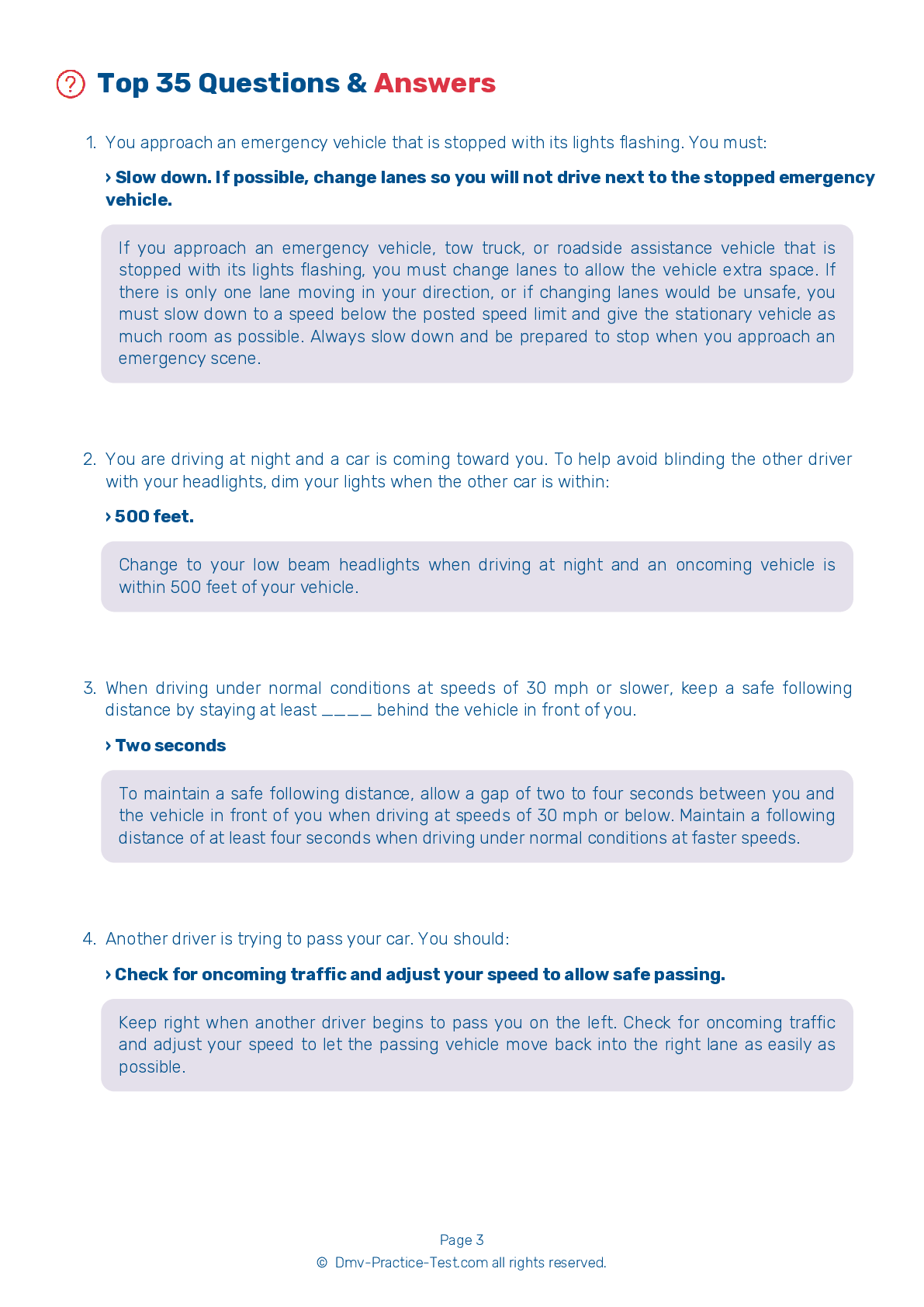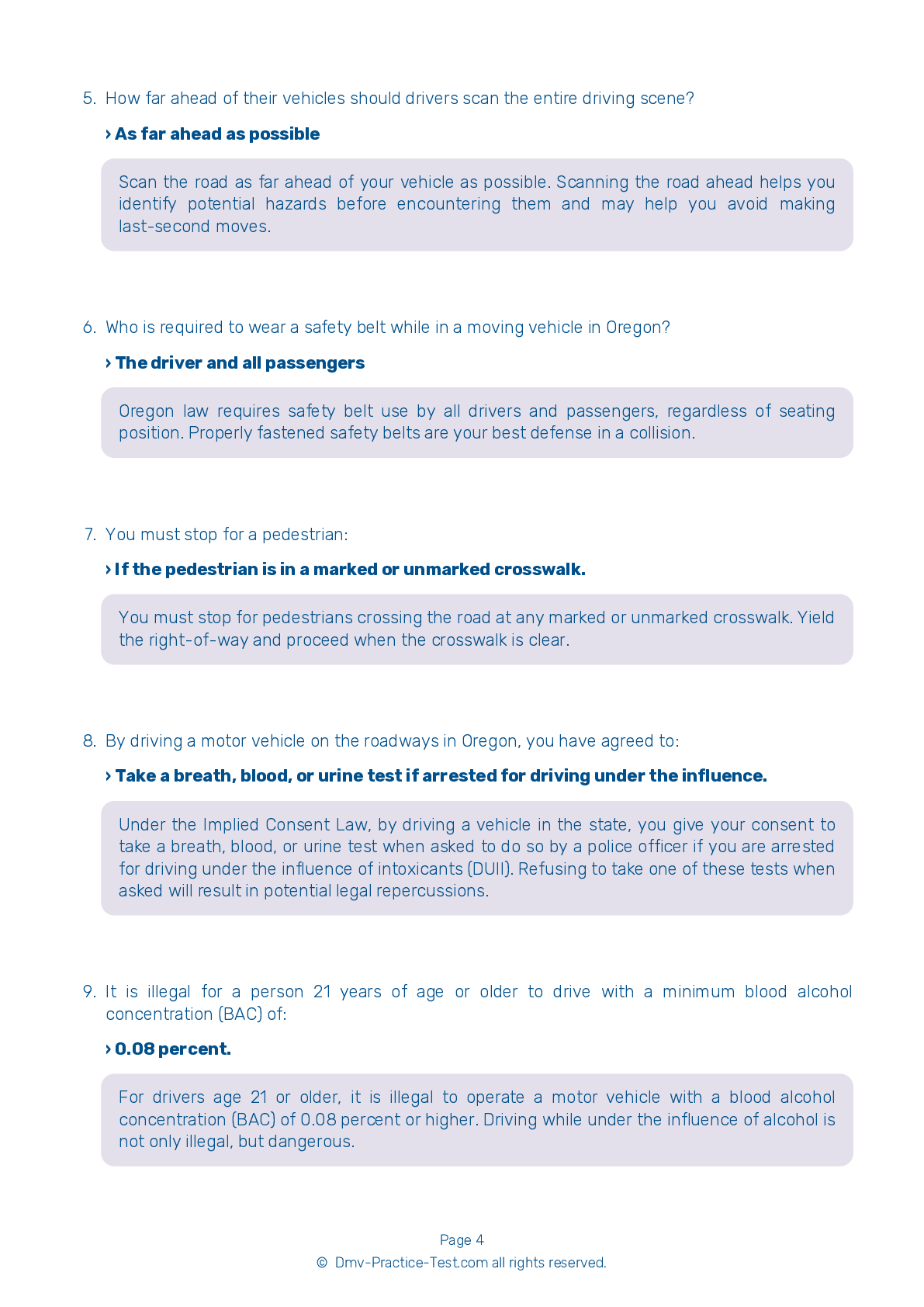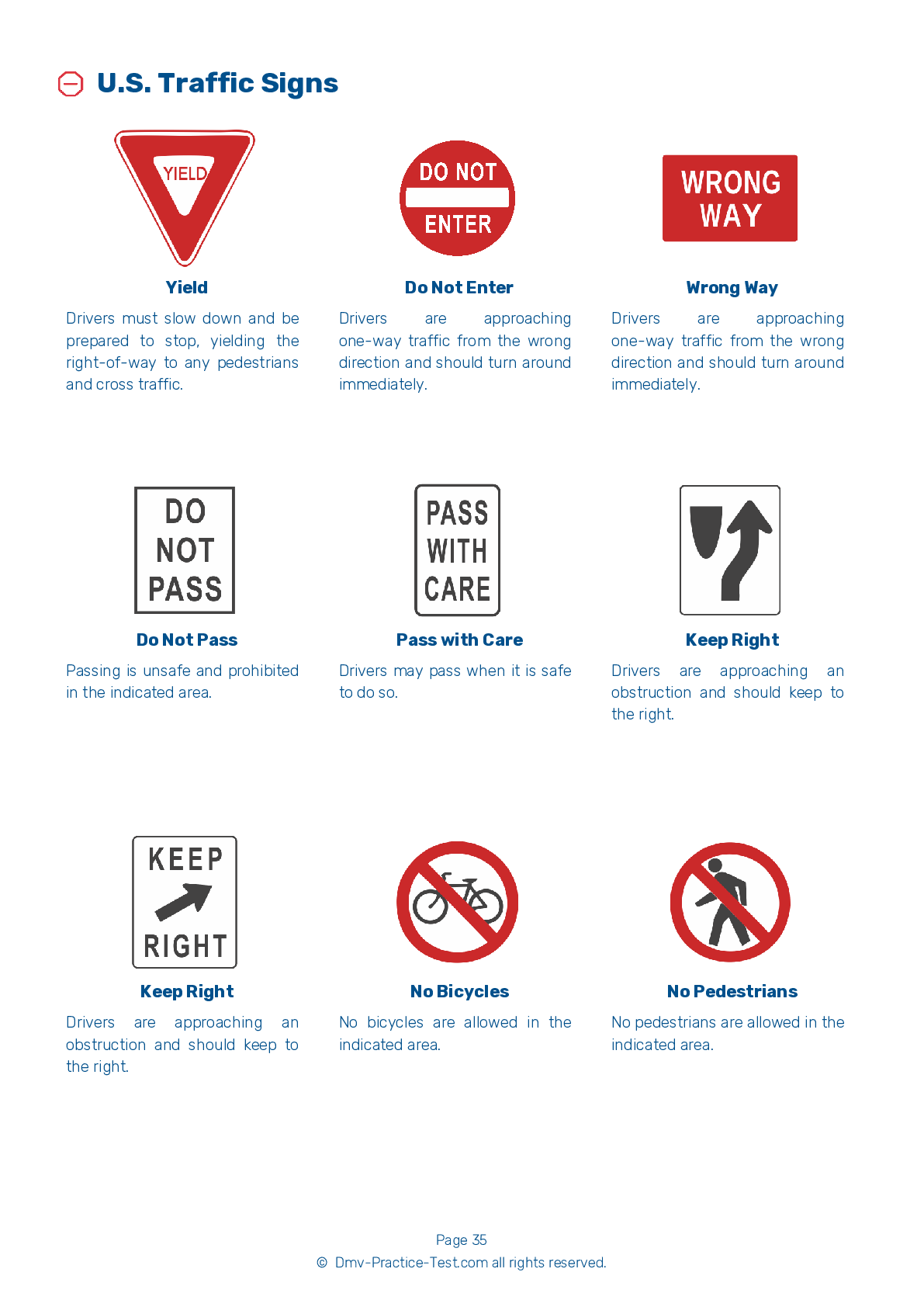FREE Oregon DMV Practice Test #12
The practise exams for the Oregon DMV have been updated for January 2025. It includes questions based on the most important traffic signals and regulations for 2025 from the Oregon Driver Handbook. To study for the DMV driving permit test and driver's licence exam, use actual questions that are very similar (often identical!) to the DMV driving permit test and driver's licence exam.
Each question on the practise exam has a tip and explanation to help you recall the ideas. Questions about traffic rules, traffic signs, and driving statutes, as well as knowledge from the Driver Handbook, will be included in the written portion of the official Oregon DMV test.
You must properly answer 28 of the 35 questions to receive a passing mark. Use the Oregon Department of Motor Vehicles' practise exam to help you prepare for your instruction permit or driver's licence.
The DMV exam is offered in a variety of languages.
Using any form of testing help will result in an automatic fail, and the DMV may take further action against your driver's licence, so avoid it.
1 . To promote traffic safety, the DMV's Driver Improvement Program:
If you have been convicted of multiple traffic offenses and/or preventable traffic accidents over a certain period of time, you may be subject to the Driver Improvement Program. Among other penalties, drivers age 18 and older will receive a 30-day license suspension if they have four convictions and/or accidents in a 24-month period. Drivers under the age of 18 will receive a 90-day restriction if they have two convictions and/or accidents, and a six-month suspension if they have a third.
2 . As a driver, you must stop at an intersection for a pedestrian:
You must stop for pedestrians crossing the road at any marked or unmarked crosswalk. Yield the right-of-way and proceed when the crosswalk is clear.
3 . Which of the following statements about right-of-way at an unmarked T intersection is true?
At a T intersection that has no posted signs or signals, traffic on the road that ends must yield to traffic on the through-road.
4 . When driving on slippery roads, you should:
On slippery roads, you should increase your following distance. It may take more time to stop your vehicle than it would under normal conditions.
5 . What might happen when alcohol is combined with another drug?
Consuming both alcohol and another drug may enhance the effects of both. For example, taking one drink when you are also using a cold remedy could affect you as if you have had several drinks.
6 . The most effective safety restraints in a traffic crash are:
Safety belts can double your chance of surviving a crash and more than double your chance of avoiding serious injury. Airbags, when used properly with safety belts, provide additional protection in a front-end crash. You should wear both shoulder and lap belts.
7 . A driver entering interstate traffic from an entrance or acceleration ramp:
If you are on an entrance or acceleration ramp and are entering interstate traffic, you should yield to drivers already on the interstate highway. Merge safely into traffic when you are able to do so.
Need Car Insurance? No problem!
Compare the best rates in Oregon and find a personalized policy that meets your needs.
1. Are You Currently insured ?
2. Married ?
3. Do you own your Home?
4. Do you have more than 1 car ?
5. Have you or a Family Member Honorably Served in U.S. Military ?
6. Your Name
7. Age
8. Zip code
IMPORTANT REMINDER:Auto Insurance is Mandatory to drive in Oregon. Get covered before you hit the road to avoid any fines.
Ranked by best match



